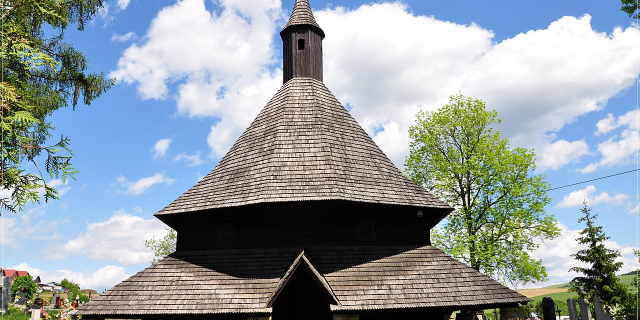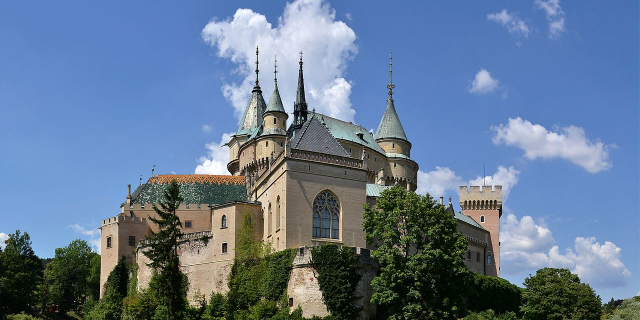Orava Castle
Orava Castle (Slovak: Oravský hrad, German: Arwaburg, Hungarian: Árva vára) is a castle situated on a high rock above Orava river in the village of Oravský Podzámok, Slovakia. It is considered to be one of the most beautiful castles in Slovakia. The castle was built in the Kingdom of Hungary, with the oldest parts being built in the thirteenth century and the most recent parts in the early seventeenth century. Many scenes of the 1922 film Nosferatu were filmed here, the castle representing Count Orlok's Transylvanian castle.
Orava Castle stands on the site of an old wooden fortification, built after the Mongol invasion of Hungary of 1241. Its history follows a familiar pattern of construction, destruction, reconstruction, fire, various ownerships and territorial squabbles. The original design was in Romanesque and Gothic style; it was later reconstructed as a Renaissance and Neo-Gothic structure, hugging the shap...Read more
Orava Castle (Slovak: Oravský hrad, German: Arwaburg, Hungarian: Árva vára) is a castle situated on a high rock above Orava river in the village of Oravský Podzámok, Slovakia. It is considered to be one of the most beautiful castles in Slovakia. The castle was built in the Kingdom of Hungary, with the oldest parts being built in the thirteenth century and the most recent parts in the early seventeenth century. Many scenes of the 1922 film Nosferatu were filmed here, the castle representing Count Orlok's Transylvanian castle.
Orava Castle stands on the site of an old wooden fortification, built after the Mongol invasion of Hungary of 1241. Its history follows a familiar pattern of construction, destruction, reconstruction, fire, various ownerships and territorial squabbles. The original design was in Romanesque and Gothic style; it was later reconstructed as a Renaissance and Neo-Gothic structure, hugging the shape of the 520-metre spur on which it perches.
The mining magnate Thurzo family, who took charge in the mid-16th century, were responsible for a great deal of rebuilding work, although its present form was not finalised until 1611. It burned down again in 1800, after which it was no longer used as a residence. After a period of dilapidation dating until World War II, the castle became a national monument.






























Add new comment